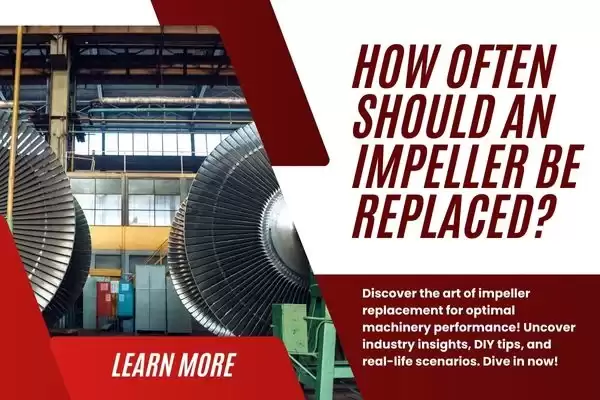
Nov 10,2023
In the intricate machinery world, impellers stand as unsung heroes, ensuring the smooth movement and transfer of fluids in various applications, from industrial pumps to household appliances. Yet, like all mechanical parts, impellers are not immune to wear and tear over time, prompting the critical question: How often should an impeller be replaced?
For machinery enthusiasts and industry professionals, the significance of regular maintenance in preserving equipment efficiency is well understood. Among the components demanding attention, impellers emerge as crucial players in fluid dynamics, serving as the uncelebrated linchpins that keep the machinery wheels turning.
To delve into the necessity of replacement, it is imperative to grasp the essence of the impeller. This rotating component, equipped with vanes or blades, becomes the conduit for fluid transportation. Commonly found in centrifugal pumps, fans, and mixers, impellers exhibit various types, each meticulously designed for specific applications. From open and closed to semi-open and shrouded impellers, the diversity in design mirrors the adaptability of these components to different operational requirements.
Acknowledging the inevitable truth that no machinery component lasts forever, including impellers, is the first step towards preventing unexpected breakdowns. Performance degradation indicators, such as decreased pumping efficiency, unusual noises, and heightened power consumption, are red flags. Visual inspection is equally crucial, with wear and tear, corrosion, and impeller blade irregulars signaling the need for timely replacement.
The frequency of impeller replacement is far from a one-size-fits-all scenario. Several factors intricately weave into the lifespan of impellers, including operational hours, environmental conditions, and the quality of impeller materials. Regular maintenance practices emerge as pivotal players, determining how often replacements are required. A nuanced understanding of these factors paves the way for a more tailored approach to impeller replacement, aligning with the specific needs of the machinery.
Insights from manufacturers and industry experts provide a valuable compass for navigating the replacement frequency of impellers. Adhering to recommended guidelines becomes the cornerstone for machinery operating within optimal parameters. Compliance with regulatory requirements, ensuring efficiency, and addressing safety concerns within industry standards are equally critical.
The advantages of timely impeller replacement transcend mere prevention of breakdowns. It extends to an enhanced equipment lifespan, improved energy efficiency, and the prevention of catastrophic failures. While the upfront cost of replacement may appear formidable, the long-term cost-effectiveness becomes evident as machinery continues to operate efficiently, minimizing downtime and repair expenses.
Approaching the decision to replace an impeller involves two paths: the do-it-yourself (DIY) route or seeking professional assistance. Understanding the complexity of the equipment and the user's capabilities becomes the linchpin in making this decision. For those inclined towards DIY, a comprehensive step-by-step guide ensures a systematic approach. Simultaneously, it is imperative to discern when professional intervention becomes necessary to avoid complications.
In conclusion, the frequency of impeller replacement is a nuanced aspect of machinery maintenance. By understanding the impeller's role, recognizing signs of wear, and considering the various factors influencing replacement frequency, machinery operators can adopt a proactive approach to maintenance. Timely replacement not only extends equipment lifespan but also contributes to improved efficiency and cost-effectiveness in the long run.